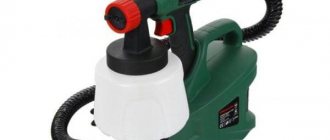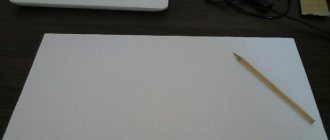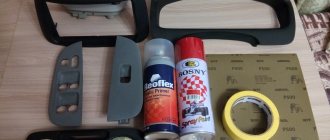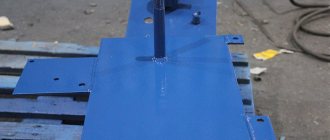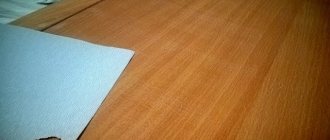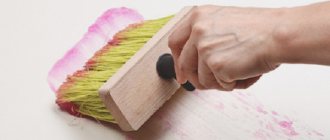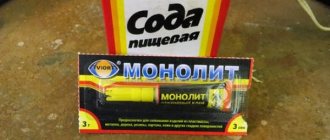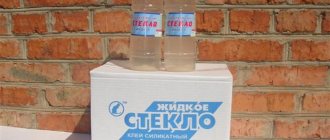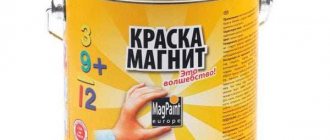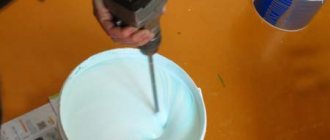Properties and Features
Liquid polymer for cars. Peculiarities
For any car owner, it is important not only to maintain the spectacular appearance of their car, but also to protect it from corrosion. Liquid plastic meets these requirements and does not contain an abrasive. This composition must be applied strictly according to technology, otherwise the coating will not be of high quality and will not perform its functions.
Before applying the polymer layer, the vehicle must be thoroughly cleaned of all contaminants and dried thoroughly. After this, the surface is degreased and liquid plastic for the car is applied to it.
The product has good penetrating ability, so it penetrates well into all pores and microcracks on the car body and forms a protective layer that repels water. After it dries, the paintwork is completely protected from the following factors:
- Ultraviolet radiation.
- Mechanical impact of sand and gravel from the road surface.
- From insect strikes and the harmful effects of dripping sap from trees.
- Negative effects of chemical reagents.
- From snow and rain.
You can apply liquid plastic yourself only if you have sufficient experience and appropriate equipment. It is intended primarily to protect the glossy finish of vehicles, since this is the area that is most exposed to dirt and dust and can quickly fade and wear out.
liquid plastic in a bucket
There are some types of liquid plastic that additionally protect parts from scratches and mechanical stress, thanks to special chemical additives. Even if such a coating is damaged, it can be easily replaced in a specific defective area.
Liquid plastic for the car makes it resistant to dirt. Dust and sand particles cannot attach to such a coating, so the car will always look well-groomed. You can wash your car in contact washes and not worry about the safety of the coating - the surface will remain undamaged.
The car plastic will not be washed off either after the first or tenth wash. But experts recommend updating the coating about once a year to provide more reliable protection.
Application method
Mix the paint thoroughly before use. The product must not be mixed with other paints and varnishes and organic solvents. The paint is applied with a brush, roller or spray gun. It is recommended to apply the paint twice. Painting work must be carried out in dry weather at a temperature of at least plus 10°C. After finishing the painting work, immediately rinse the tool with tap water. It is not recommended to paint external surfaces in rainy weather, high humidity or when the surface is icing.
Recommendations for applying liquid plastic
Few people know that car plastic paint can also remove minor scratches on the car body. If the defects are more serious (for example, there are damages and chips on the front bumper), all of them are removed manually by a technician before starting work.
During the painting process and when preparing the car for work, you need to remember the following rules:
- The work premises must be heated, with a well-equipped ventilation system.
- It is recommended to work in a respirator and a special protective suit.
- It is better to prepare all the tools and materials necessary for painting in advance.
- The room should be spacious and the workplace comfortable. You can freely put the removed elements of the car in it and treat the vehicle body with liquid plastic without constraint in movements.
- Before starting work, it is necessary to determine from what material the parts to be painted were made. If they are plastic, you can skip the preliminary priming step and go straight to painting. In other cases, preparatory work is carried out according to the same principle as preparing a car for applying a conventional paint coating.
Before work, the surface is thoroughly cleaned, all scratches and dents are removed. Damaged areas are additionally puttyed with putty for plastic (it has increased elasticity).
Then the body is cleaned and primed. It is also necessary to degrease and then wipe the surface with an antistatic cloth. Then liquid plastic is applied. Each layer is given enough time to dry (you must follow the manufacturer's recommendations).
After the vehicle has dried, it is ready for use and in the process will be reliably protected from negative influences.
Components of plastic dye
Liquid plastic paint is a variety of polymer-based materials with a fluid consistency. Over time it hardens. This process can be affected by chemical reactions and the action of air at a certain temperature.
When classifying dyes, the following are taken into account:
- its functionality;
- constituent elements;
- application area;
- kinds.
Plastic paint is available in the following composition:
- with one component;
- with two or more.
In paint with one component:
- organic solvent;
- polyurethane as a filler;
- alkyd, acrylic resins with the addition of plasticizers, modifiers, colors and other additives that enhance the effect of liquid plastic paint. In addition, these additives give the material special properties.
Paint covers various materials: wood, metal base, polymer structures, concrete surface, plaster. For each base, its own plastic composition is selected. Different paints and enamels are used. A polymer film is formed that protects the surface from dirt, loads, temperature fluctuations, and aggressive environments. A film appears after drying.
The composition combines two substances with two components, which lead to its hardening in a few minutes.
Epoxy polyester paint
Epoxy-polyester paint consists of 50-70% polyester and epoxy resins, as well as hardeners, fillers and pigments. The amount of the latter components in the paint is about 35-50%. This type of paint and varnish material refers to powder enamels for internal use. Such paints are also called hybrid.
This paint is distinguished by its unique properties, which consist, first of all, in high strength characteristics, such as:
- impact resistance;
- elasticity;
- resistance to the effects of various types of solvents;
- excellent spreadability.
It is worth noting that the scope of application of epoxy-polyester paints is quite wide. Such paints and varnishes are used for painting metal products that are located indoors. Such items include various household appliances, electrical equipment, dishes, furniture, car accessories, heating elements, tourism accessories and much more. Thanks to its properties, the paint not only protects products from corrosion, but also significantly improves their appearance. The paint is resistant to high temperatures and therefore does not fade or turn yellow.
There are two methods available for coating objects:
- Electrostatic spray;
- Tribostatic spray.
The process of painting objects with polyester and epoxy-polyester powder compositions includes the following steps:
- Preparing the surface of an object for painting, which consists of removing old paint, various defects and irregularities, as well as rust;
- Surface treatment with a primer;
- Applying powder to the surface using one of the available methods;
- Polymerization of the coating. To do this, it is necessary to expose the painted object to a sufficiently high temperature, in the range of 140-2200C, depending on the type of paint. During the heating process, the powder slowly melts, which subsequently turns into a fairly durable, uniform coating.
Surfaces painted with these paints can have a glossy or textured appearance. In the first case, the gloss will hide minor irregularities and other defects. Texture, unlike gloss, on the contrary, will emphasize all the advantages of the product.
Scope of application of single component plastic dye
The constituent elements of a liquid polymer determine its area and purpose of use.
- Protects the base from the effects of atmospheric phenomena using plastic as a dye and enamel based on polyurethane, acrylic and alkyd. The colors introduced into the composition decorate the surface of different materials.
Concrete floors, wood structures and metal products indoors or outdoors are protected with polyurethane enamel after preliminary priming.
- The polymer composition protects from the UV rays of the sun, from stress, from high air humidity, and from temperature fluctuations. Such technical characteristics extend the service life of structures coated with polyurethane CMs.
Scope of application
Almost any structure or part made of plastic can be painted with liquid plastic. However, different types of paints are used for different types of plastics. Most often, plastic dyes are used for coloring:
- siding;
- rigid PVC;
- sandwich panels;
- building profiles;
- door and window frames.
Liquid plastic can be applied not only to plastic, but also to many other materials, for example, brick, concrete, plaster, wood and other surfaces. Plastic enamels are also used for painting metal products. For example, PS-160 paint is used to paint the following objects:
- piping systems, including heating mains, through which heated liquid is supplied;
- metal parts and structures in industrial buildings, for example, in warehouses, workshops;
- metal structures that are constantly in contact with water, for example, swimming pools, ships, boats, piers and others;
- load-bearing elements of various structures, including viaducts, bridges, buildings and other structures where increased reliability is required.
Creation of architectural structures
A two-component plastic dye used to create small architectural structures.
To obtain material for creativity, two or more components are mixed, resulting in a mixture that is fluid in consistency. It is poured into molds. After a couple of minutes, the material hardens and resembles glass.
Plastic dye repeats the shape of any, even the smallest elements. They are characterized by high mechanical qualities, painted in different shades, products are polished and processed on a milling machine, and are resistant to direct sunlight.
Advantages of polymer paints
Powder dyes have a number of advantages, due to which they can be used to process external and internal products made of different types of metal. The advantages of polymers include: - they are not afraid of mechanical damage: if the metal product is damaged or deformed, the color will simply take a new shape, remaining on the surface; — water and moisture resistance: the polymer coating does not lose its qualities, even if the product is in or under water for a long time; - resistance to UV rays: while other types of paints from sunlight can fade, collapse and lose all their properties, the polymer coating will remain just as durable and bright, nothing will happen to it even on the sunniest day; — can withstand fire and high temperatures: since polymer painting is carried out under strong thermal influence, the coating is not afraid of high temperatures in the future; You can even use powder paint to paint your grill and heating boiler. - not destroyed by chemicals.
Paint application methods
Before painting with liquid plastic, the products are cleaned and degreased.
- The junction of the plastic elements is evenly covered with a thin layer of Cosmofen glue from a tube. The finger is moistened in acetone, and the glue is smoothed with it. You should wear rubber gloves on your hands. The material is not rubbed into the gap, it is applied in small strips of 40 cm. Then the seam will not have time to quickly harden in pieces.
- Water-based paint is applied to wood with a roller, brush, or spray gun.
- All other surfaces are covered with polyurethane enamel in the same way.
- The container indicates the method of applying CM. The scope and functional purpose of the dye will tell you which plastic paint is best for each case.
Coating a car with liquid plastic
A car protected in this way will not only please its owner with its spectacular appearance longer, but will also retain the value of the car in the event that it needs to be sold. Thanks to this coating, you will now need to wash your car much less often than before.
The car processing process is carried out using a special technology and includes several stages:
- The vehicle is carefully prepared. At the initial stage, it is washed and dried well, then a careful inspection is carried out in good lighting. All detected scratches, chips, as well as rust on the body are removed and cleaned, and scratches on plastic are also removed. Then a full range of repair work is carried out to eliminate defects locally.
- Plastic is applied to the car as the first layer. It penetrates into all existing microcracks and will serve as reliable protection for the car from various aggressive substances that destroy the coating from entering these places.
- After the first layer has dried, the next one is applied. It kind of “preserves” the car’s coating in the condition in which it is at the time of processing.
- Polymerization of plastic on the body takes about 10 days. During this period, you cannot operate the car, and it is strictly forbidden to wash it. After this period, a technological wash is carried out.
You can protect your car from the aggressive effects of environmental factors thanks to the high adhesive properties of plastic. Coating a car with liquid plastic is carried out using a technology almost identical to applying conventional paintwork to the body.
yellow liquid plastic
You need to understand that this material itself is not able to dissolve the dirt accumulated on it or remove scratches. If the master promises this, most likely this is a charlatan who himself does not understand enough about the properties and functions of liquid plastic.
Therefore, to carry out work, it is recommended to contact only trusted service stations and not rely on garage technicians.
Removing plastic paint
- Random drops of glue on the surface of the plastic structure are removed with a thin blade. The next step is to treat the area with a special solvent.
- Water-based plastic paint is removed from the surface with water before it dries. When the material has already dried, it is removed with a knife.
- The metal-based Cosmofen material is removed with a solvent. When it dries, it can be easily removed. The coating looks like a film. The tenacity of the composition with metal is zero.
Liquid plastic - advantages and disadvantages of use
In addition to the absence of the disadvantages inherent in sealants and conventional glue, liquid plastic has a number of advantages that make it one of the leaders among materials for the corresponding purpose. The main one is the invisible and durable (diffuse) connection of different types of plastic, turning individual elements into a single structure. Among other advantages it is worth highlighting:
- The connecting seams are formed by a material that is as identical as possible to the plastic of PVC profiles;
- Liquid plastic for plastic windows ideally connects solid PVC parts if their structure and density do not differ from each other;
- After hardening, the plastic merges with the surfaces being connected, turning individual parts into a single structure (for example, a slope and a window);
- The strength of the seam is ensured by diffuse welding (the components of liquid plastic and the materials being joined penetrate each other);
- The material is environmentally friendly and prevents the appearance of mold or mildew at the joints;
- The adhesive composition has excellent moisture resistance and ensures complete tightness of the joints. Does not absorb foreign components from the environment (tobacco smoke, etc.);
- The resulting connection is highly durable and resistant to mechanical damage and weather surprises. Has high fire resistance (lights up only at temperatures above +320 degrees C);
- Liquid plastic makes it possible to level a not too smooth surface, eliminate gaps and roughness;
- Manufacturers of liquid plastic sealant guarantee that it retains its original color for 15 years.
The disadvantage of using liquid plastic is rapid hardening. The specific glue hardens in the open air for 60 seconds, which is not enough when connecting large structures.
Offers from manufacturers
Plastic with two components is produced by foreign companies:
- Germany, Cosmofen paint;
- USA, Smooth-On concern, KM CRYSTAL CLEAR;
- Italy, material brand PolyCast;
- Italy, liquid plastic NATICAST;
- USA, Polytek company produces EasyFlo paint;
- France, Axson company, Axson F160 plastic brand;
- China, PU plastics JETICAST
Manufacturers from Russia producing plastic paint:
- "SpetsEmal" - paint and varnish plant in Yaroslavl;
- Sofradecor - in Novosibirsk;
- Silagerm 4010 – produced by the production association “TECHNOLOGY-PLAST”;
- Paint Liquid PVC TN – manufacturer.
The use of liquid plastic with one component allows you to protect the base from various negative effects, while with two components you can decorate the product yourself.
>
The effect of using liquid plastic
Liquid plastic is a synthetic compound that significantly increases the reliability of the paintwork of a car body, protecting it from external damage and, as a result, preventing the effect of moisture on the metal. The applied plastic makes the coating on the car more resistant to scratches or wear. And if damage does occur, it does not make a furrow down to the metal, making it easy to remove with your own hands. Liquid plastic protects the body from:
- influence of precipitation, sand and dirt;
- ultraviolet radiation;
- exposure to chemicals.
Today, the car market is replete with various types of liquid plastic. First of all, they differ in composition and provide high-quality protection not only for the car body as a whole, but also for its individual parts. Regardless of the material of the manufactured part - be it plastic or metal.
Most motorists are wondering how to wash and clean their vehicles after covering them with liquid plastic. There are no special requirements, so there is no need to change the usual procedures: you can do everything as before, including washing in brush sinks and cleaning yourself: the thickness and quality of the coating layer will not change.
In addition, many experts recommend a complete recoat every year to protect the paint as much as possible and ensure that its original condition has not changed.
Application of liquid plastic - specifics of work
The use of liquid plastic does not require special training or knowledge, but certain points need to be taken into account when working with it:
- Like any glue, liquid plastic hardens quite quickly after application, so joining parts or processing seams must be done within 1 minute.
- The materials being joined take place within 2-4 minutes, and complete hardening occurs within 24 hours.
- The characteristics of the material are maximized at an ambient humidity of about 60% and a temperature range from +5 to +20 degrees C.
- Recommended sealant consumption is 150 grams per sq.m.
- Liquid plastic for PVC windows ignites at a temperature of + 321 degrees C.
- Contact of the composition with PVC surfaces is undesirable. If the sealant does get on the plastic, it is removed with a special cleaner.
- Cleaners are also used to clean metal instruments from liquid plastic. The hardened composition can be removed manually - the film is easily removed, since the sealant does not adhere to the metal.
In the room where work is carried out, high-quality ventilation is necessary. The sealant must be applied while wearing a respirator or protective mask.
Order of operations
- Before applying the adhesive, the surfaces to be joined (the seam being processed) are cleaned of dirt, degreased and dried. After treatment, no lint from the rag should remain on the prepared areas.
- The sealant is prepared for use - a cone-shaped cap with a cut edge is attached to the tube (tube).
- Liquid plastic is applied in an even layer. There is no need to smear or rub the composition into the surface.
- The elements are connected (by gluing) and fixed in the desired position until the sealant dries (15 minutes).
Before gluing valuable parts for the first time, it is worth practicing on unnecessary fragments (remnants of slopes or window sills). The modern construction market offers customers several types of liquid plastic for windows, doors and other PVC products. The most popular sealant is the German company Cosmofen. The company supplies the market with Cosmofen 345 adhesives in two versions: in tubes (for application with a mounting gun) and in standard tubes.
General information
Description of LMB
Plastic type paints have significant differences from other paints and varnishes. The use of this type of dye has certain nuances and features, for example, if you need to paint ABS or PVC plastic, then first you need to apply a layer of a special primer, which is sold in special construction stores with paint and varnish products.
Such paint is a solution of pigment-type substances in a polymer suspension, and in this liquid the plastic will be in dissolved form, and an inorganic or even organic solution is used as a solvent. Some people tend to believe that plastic paints can only be applied automatically, and then heat treatment of the painted layer is required. Such processing is required, but the dye can be applied not just from a spray bottle, but also in other ways.
Main advantages
Liquid plastic has the following advantages:
Excellent indicators of penetrating ability, for which plastic paint will get into all, even the smallest pores, fill them and create a reliable layer on the surface that will repel water and protect the plastic from damage.- Resistant to ultraviolet rays. The paint will not fade when exposed to the sun, and after a while it will not change its original shade.
- Excellent resistance to wear and mechanical stress.
- Chemicals will not damage the painted layer.
- Resistance to precipitation and atmospheric factors.
Let's talk in more detail about paint brands.
Details
Example of plastic paints
Today there are many types of dyes for plastic. For example, we suggest considering a fairly popular economical version of the product - PS-160 paint. The cost of such a dye is small, and the price is no more than 110 rubles per 1 kg.
The manufacturing company makes paint from the following components:
- Polystyrene.
- Pigment substances.
- Special additives.
- Organic solvents.
In such a coloring mixture, small pieces of polystyrene will be dissolved in toluene, and coloring pigments should be added to this solution. Once a component such as toluene has been applied and evaporated, the plastic will be left with an applied layer that forms a hard protective layer.
Area of use
Almost every part or structure made of plastic can be painted with polymer paint (plastic). But for different types of plastics, different types of paints and varnishes are used.
Most often, plastic-type dyes are used for coloring:
Rigid PVC.- Siding.
- Construction profiles.
- Sandwich panels.
- Window and door frames.
The product for plastic can also be applied to other materials, for example, concrete, brick, wood, plastered and other surfaces. Plastic enamels are also used for painting metal products.
For example, PS-160 paint is used to paint the following objects:
- Pipeline systems, including thermal routes, through which heated liquid will be supplied.
- Metal parts and structures in an industrial building, for example, in a workshop or warehouse.
- Metal structures that are constantly in contact with water - ships, swimming pools, boats, piers, etc.
- Load-bearing elements of all kinds of structures, including bridges, viaducts, buildings and other structures where increased reliability is required.
Let's look at the characteristics.
Technical properties and characteristics
Any plastic type paint has its own individual properties and characteristics. For example, here are the parameters of the popular coloring agent PS-160:
- Drying time for one layer is approximately 1 hour.
- Paint consumption when applied by pneumatic spraying is 0.2 kg per square meter.
- The proportion of substances in the applied layers ranges from 23 to 30%. This indicator will depend on how much the paint is diluted with a solvent.
- The resistance of the dried layer to the static effects of liquid at room temperature is at least two days.
Please note that manufacturers recommend using toluene as a diluent. In addition to it, you can use a solvent, but in no case white spirit/acetone, because they will convert the paint into an emulsion, and this will have a bad effect on the quality of the protective layer. The instructions for the paint and varnish product will definitely indicate which solvent can be used to dilute the composition.
Varieties
Today, several varieties of plastic-type paints are made for processing plastic and other materials. Here is a list of the main, most popular types:
- Water-based acrylic enamels or even acrylic-polyurethane compositions. Most often they are produced in two different containers, one containing the base and the second the hardener. Before applying the paint and varnish composition, the paint components should be mixed together, so that the painted layer will be resistant to mechanical and chemical influences. Acrylic types of compounds have excellent adhesion, resistance and coverage to ultraviolet rays.
- Polyurethene dyes have high strength indicators. Such compositions are a mixture of acrylate and polyurethane components. Polyurethane-based plastic paints can simultaneously act as dyes and primers. If the surface is clean, it does not need to be primed in advance. Although polyurethane compounds are inexpensive, their cost is more than offset by their excellent wear resistance. Moreover, such mixtures are very economical, have high resistance to water, as well as excellent elasticity and resilience. The polyurethane coating will help preserve the visual appeal and reliable protection of the product for a long time.
- Soft touch is a special rubberized paint that is used for mobile phones, laptops, tablets, glasses cases, toys, flashlights, tool handles and most other items. The painted surface is very pleasant to the touch, can absorb sound and light, and also has excellent scratch resistance. After painting, things will not slip in your hands, and the paint will create a warm, pleasant and soft layer on them. Thanks to such rubberized paint, the products can not wear out for a long time. This mixture can also be applied to wood, plastic, metal, polymer materials and other surfaces.
- Vinyl-type dyes are environmentally friendly substances that cost very little. Although vinyl compounds will have several advantages, they have very weak strength, and the coating quickly breaks down, gets scratched, and also becomes unattractive. For this reason, such paints are used less and less nowadays.
Now let's talk about how to prepare the area for painting.
Surface preparation before painting
Before you begin painting plastic or any other material with liquid plastic, you should follow the preparation steps:
- Using a damp cloth or brush, remove any type of contaminant from the surface, for example, debris, dirt and dust.
- Use organic solvents and a rag to degrease the material so that there are no greasy oil stains on it.
- If the metal surface is painted, it should be cleaned (ideally to a shine) with a wire brush or sandpaper to remove corrosive deposits, rust, scale and slag.
- Remove the old layer of paint material. Sandblasting is the best option, but if you do not have such equipment, you can use a hand or electric sander.
If there is rust on a metal surface, it is advisable to treat it with a special rust converter before painting. Such a solution will quickly react with the rust layer, and the result will be a durable, yet insoluble layer. But if there is plastic-type rust on the material, then it is better to remove it mechanically. After cleaning, it is recommended to prime the surface, but this is not at all necessary. Whether or not to prime the base should be specified in the instructions for use of the coloring mixture.
Please note that after cleaning the metal, you should start painting no later than 6 hours later. Otherwise, the moisture in the air will begin to provoke the formation of corrosion processes, which means that cleaning will need to be repeated again.
Work execution algorithm
Ideally, painting plastic or other material should be done in not one, but even two or three layers of liquid plastic. To carry out coloring, all kinds of tools are used; some coloring mixtures can only be applied with a spray gun, while others are applied with a brush or roller. If a spray gun is used, the hose on it must be resistant to organic solvents. You can paint in a temperature range from +5 to +31 degrees, and air humidity should be no more than 75%. It is not recommended to paint plastic or other surfaces at temperatures above +31 degrees, as otherwise the coating may begin to peel off. Moreover, you should not paint if the temperature drops very quickly, because this can lead to dew and condensation, and painting wet materials is not allowed. Painting cannot be done outside in foggy or rainy weather.
